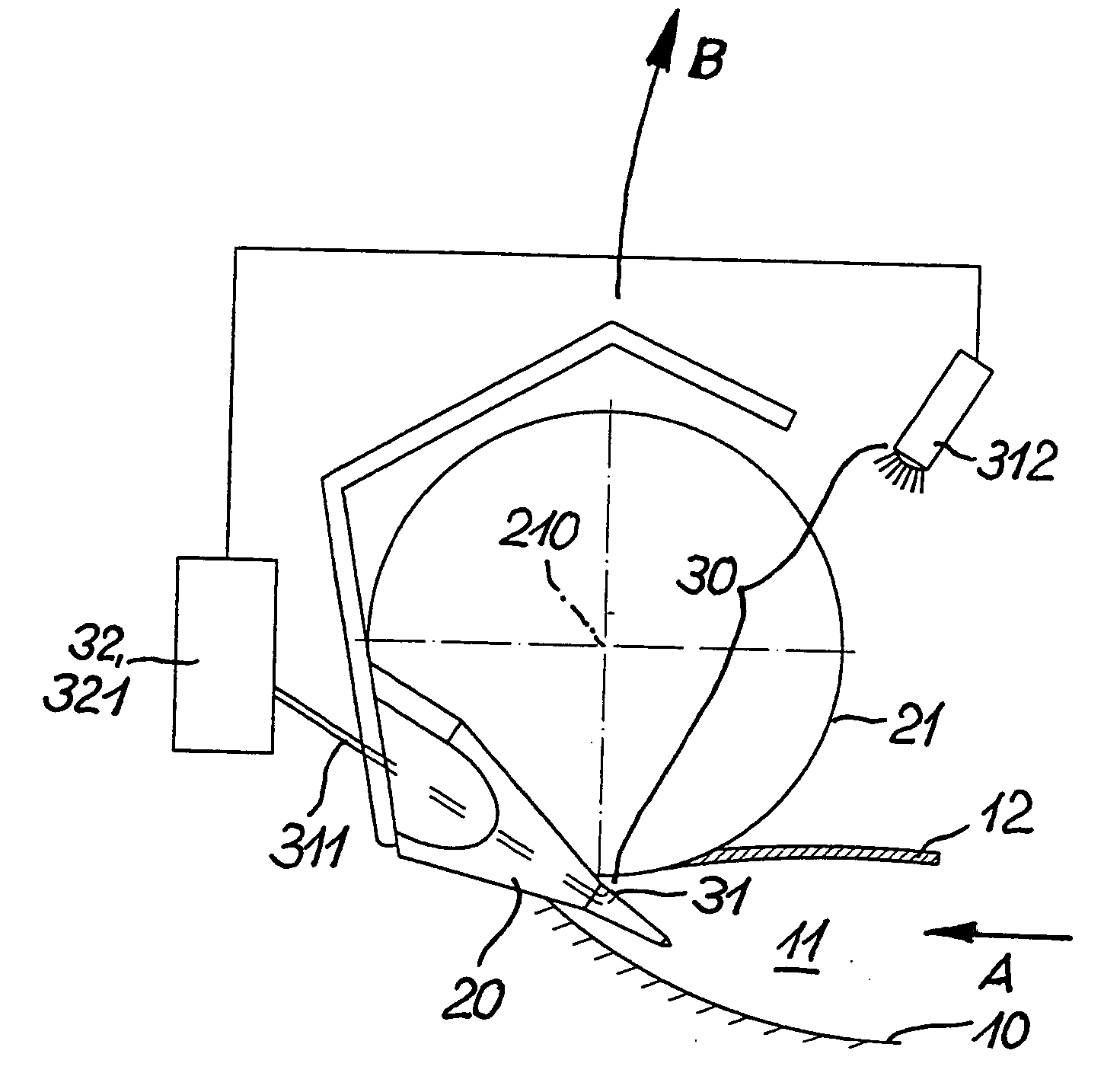Device and method for controlling the beginning of a tool operation in fish treatment machine
a technology for treating machines and tools, applied in fish arranging, fish filleting, butchering, etc., can solve problems such as damage to scales, difficulty in arranging, and end product no longer meeting the demands of premium quality requirements
- Summary
- Abstract
- Description
- Claims
- Application Information
AI Technical Summary
Benefits of technology
Problems solved by technology
Method used
Image
Examples
embodiment
OF EMBODIMENT
[0017] In FIGS. 1A and B can be seen a first embodiment of a spike assembly as used for example in a fish gutting machine of the kind shown in DE 198 29 376 A1. A fish 10 held with its ventral side facing upwards in a conveyor not shown in more detail here is conveyed tail first in the direction of arrow A. The abdominal cavity 11 and ventral wall 12 of the fish are here shown purely schematically. For the purpose of aligning the fish 10, a guide element designed as a spike 20 is arranged for penetration into the abdominal cavity through the anus opening, not described in more detail. This spike 20 comprises in the extent of its width a recess in which rotates a slitting blade 21 for slitting open the abdominal cavity. This slitting blade 21 slits open the fish, which is kept aligned by the spike 20, in its ventral wall 12 along the ventral seam as it advances in the direction of the arrow A, so that subsequently tools for extracting the entrails and cleaning the abdomi...
PUM
 Login to View More
Login to View More Abstract
Description
Claims
Application Information
 Login to View More
Login to View More - R&D
- Intellectual Property
- Life Sciences
- Materials
- Tech Scout
- Unparalleled Data Quality
- Higher Quality Content
- 60% Fewer Hallucinations
Browse by: Latest US Patents, China's latest patents, Technical Efficacy Thesaurus, Application Domain, Technology Topic, Popular Technical Reports.
© 2025 PatSnap. All rights reserved.Legal|Privacy policy|Modern Slavery Act Transparency Statement|Sitemap|About US| Contact US: help@patsnap.com



